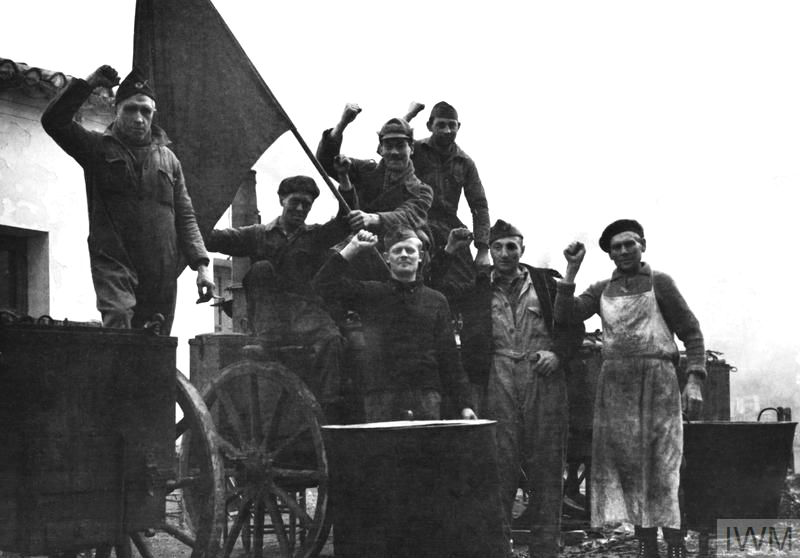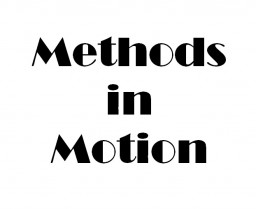 Members of the International Brigade in the British cookhouse at Albacete raise their fists in the Communist salute
Members of the International Brigade in the British cookhouse at Albacete raise their fists in the Communist salute
Raymond Williams’s novel Loyalties tells the story of a generation of young people from contrasting class backgrounds caught up in the left and anti-fascist movements of the 1930s. Several join (and leave) the British Communist Party in the ensuing years, but the historical significance of that earlier period evolves to encompass changing public and private loyalties. Above all, this is reflected through the question of espionage when the activities of one prompt considerations within the group on the meaning of loyalty. In his novel Williams gets to the heart of human vulnerabilities at moments of competing loyalties.
The CCIG-funded 'Loyalties' seminar at Kellogg College, Oxford, set out to investigate some of the divided or dual loyalties of former British communists. A prospect enhanced by the recent release of Security Service (MI5) files, the availability of new archival sources of the British Communist Party (CPGB), and the developing interest in personal and family memoir. However, the seminar stirred two methodological questions.
Firstly, what can we draw from different academic disciplines? Debates about the divided loyalties of communists involved in espionage have been largely confined to intelligence studies, with little interest among labour historians, political scientists or sociologists. While attention has been given to the conflict between communist commitment and the pursuit of intellectual freedom among writers and artists, the loyalties of communists in public life, whether at war or in politics, let alone within family relations, have received less attention. A multidisciplinary approach will be key to deeper insight.
Secondly, how do we assess different kinds of evidence? Although the MI5 files of former communists – including notable figures such as Eric Hobsbawm and Doris Lessing – have enriched our understanding of their lives and the history of the period, these were compiled on behalf of the state towards subjects suspected of being subversive. On the other hand, family memoir or biography raise the problem of the researcher being too close to their subject.
In response to the first question, the seminar brought together scholars from history, intelligence studies, political science and English literature, along with former participants in the CP and relatives of former communists. This enabled discussions of different kinds of dual loyalties, for example of members working for the Special Operations Executive (SOE) during World War II, as well as ‘Commissars’ in the International Brigade during the Spanish Civil War, and as a Soviet agent in the regular army.
Other papers on the artist Felicia Browne (the first British volunteer to be killed in Spain), on popular front literature, and on Communist Party intellectuals in the Cold War period, considered the constraints imposed on intellectual freedom and the ways in which these were managed. The range of contested loyalties covered was vast: from the impact of clashes over the Korean War to the internment camps in Vichy France.
In the case of Sam Russell, the Daily Worker journalist, these loyalties were tested and renewed in Spain in the 1930s, Moscow in 1956 and Czechoslovakia in 1968, as communist hegemony came under scrutiny. Conversely, others benefited from the relatively fertile period of the mid-1930s, when the CPGB was attractive to middle-class members disillusioned with the depression and the rise of fascism, and organisations such as the Left Book Club (set up by Victor Gollancz in 1936, with an estimated readership of 250,000 during its peak) briefly flourished.
The loyalties of some communists came under increasing pressure during the Cold War, whether over acceptance of the Soviet Union or in making sense of their own political beliefs and integrity. For others, communist commitment produced undivided loyalty, or faith to the Party was able to override rising doubts.
There was an appreciation that used judiciously official sources – MI5 files – and unofficial – personal memoir – offer different insight into motivations, beliefs and commitments. The latter enables researchers to build pictures of lives we could not otherwise visualise, although it’s important to keep in mind different historical contexts. The dual loyalties of a communist such as James Klugmann – the subject of my book The Shadow Man – working for SOE in 1942-44 and advising closer links to Marshal Tito did not, at the time, represent a conflict of loyalty.
On the other hand, memoirs and family histories offer new insight on the public and private loyalties of active communists, notably those in positions of leadership whose duties to the Party were often thought to lead to neglect of family responsibilities; a commitment to equality did not end a gendered division of labour in the communist home. The range of papers and their rich contributions on the nature of communist loyalties suggest further interdisciplinary research will be productive.
Geoff Andrews' book The Shadow Man: At the Heart of the Cambridge Spy Circle was published by I B Tauris in 2015
More on MiM
The Methods in Motion blogs are by researchers linked to the Centre for Citizenship, Identities and Governance. The blogs represent their opinions emerging from research in progress, and do not necessarily represent the views of the Research Centre or Open University. You can discover more about Methods in Motion on the CCIG website.





Rate and Review
Rate this article
Review this article
Log into OpenLearn to leave reviews and join in the conversation.
Article reviews